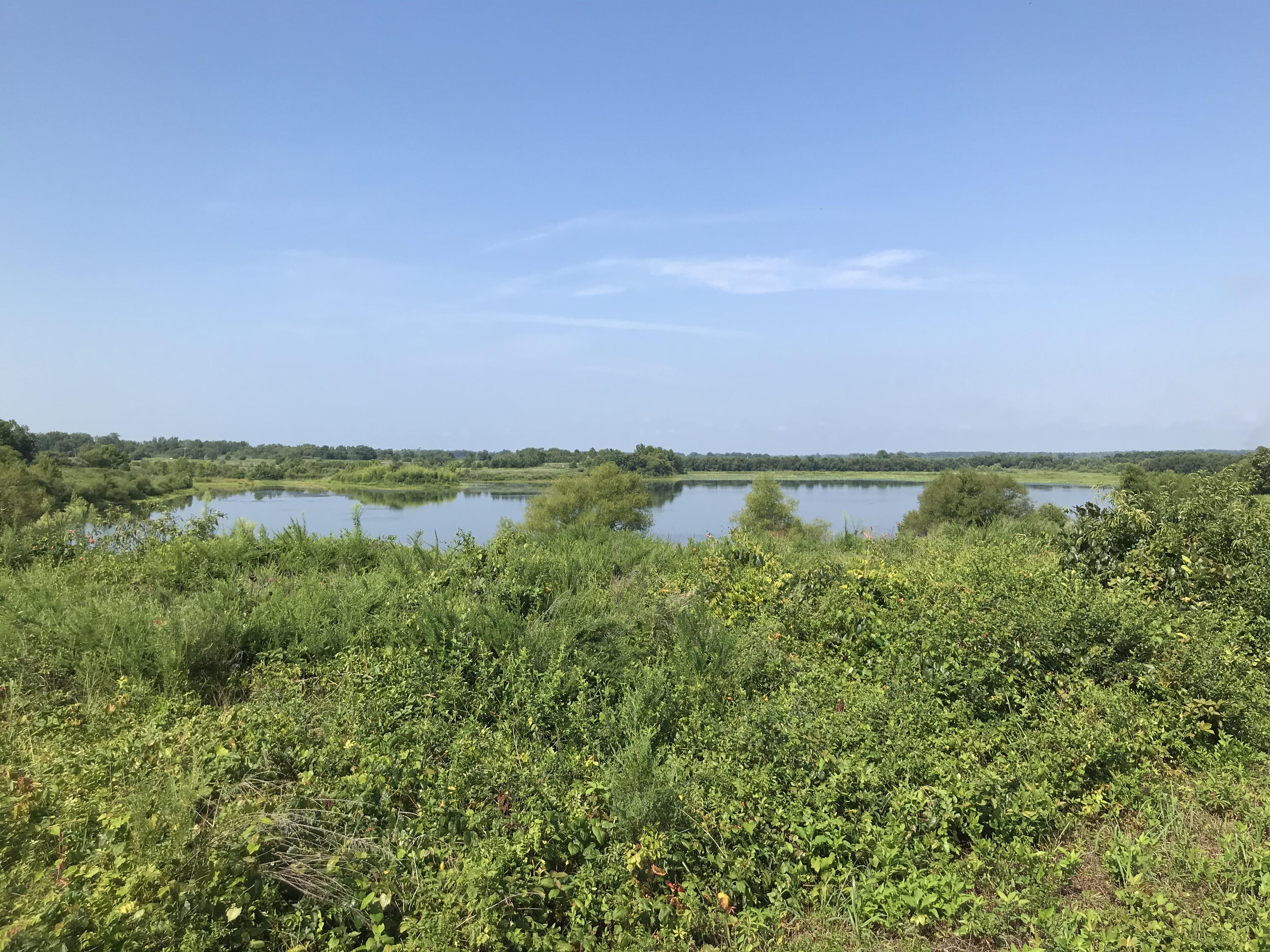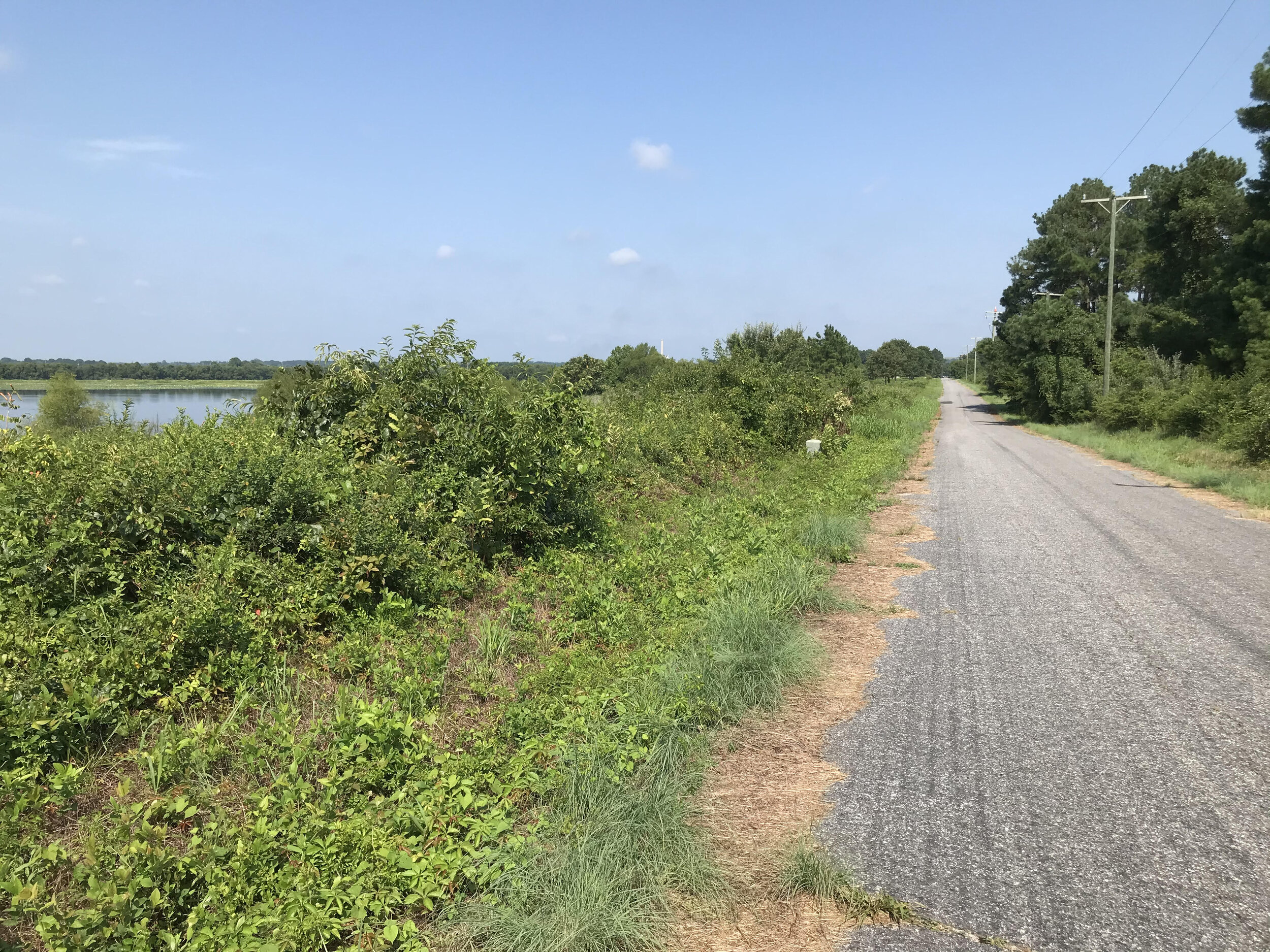Of the several active and retired quarry ponds in the vicinity, this is the only one readily viewable from a publicly accessible location, with the rest being inaccessible. LaGrange Lane is a quiet, dead-end public road that can reasonably be expected to have very few to no passing cars during most visits making it a pleasant place go birding. That said, please be aware that all of the land on either side of the road is private and the landowners have been known to confront trespassers.
The main draw of this road is that it provides views of a large, abandoned quarry pond to its southwest, but don’t neglect the scrubby and forested areas along its length, which may hold interesting passerines, particularly during spring and fall migration. This quarry pond is notable for propensity to host rarities at all seasons. Scanning the pond is best done near the end of the road with a scope and in the morning, since most birds are quite far off and the lighting rapidly becomes unfavorable as the day wears on. A pond northeast of the road is not easily birded without walking onto heavily posted private land, so it is not included in this profile.
Winter months see large numbers and diversity of swans, geese, dabblers, and diving ducks. Waterfowl diversity is highlighted by the odd Greater White-fronted, Snow or Cackling Goose, Tundra Swan, Northern Shoveler, American Wigeon, Northern Pintail, Lesser Scaup, Canvasback, and Redhead; and less frequently by Common Goldeneye, Greater Scaup, and Common Merganser. Eurasian Wigeon seems a likely candidate to make a showing here someday and just maybe a Tufted Duck amongst the thousands of Ring-necks. This refuge for migrant shorebirds typically only holds onto Wilson’s Snipe and Killdeer during the winter, but Greater Yellowlegs have been found here mid-winter on one occasion. The King George Landfill nearby to the northwest serves as a magnet for massive gull numbers and at any given point in the winter some percentage of those gulls are either on the water here or flying over. Laughing Gulls typically peak in late October through early November with numbers dwindling through late December or early January when they typically disappear until March. Ring-billed and Herring Gulls are by far the most common throughout the season with a few Great Black-backed and even fewer Lesser Black-backed Gulls occasionally being found in the mix. Peak gull counts number in the thousands so be prepared to get comfortable if finding a Franklin’s, California, Iceland, Glaucous, Mew or Slaty-backed(?!) is on your agenda. Keep an eye out for American Coot, a challenging species in King George County away from the quarries. The trees and shrubs lining the road may hold both kinglets, a variety of sparrows (including White-crowned), and rarely an Orange-crowned or Palm Warbler.
Early spring sees a steady stream of migrating waterfowl including species that are rarely present or absent during the winter, such as Blue-winged Teal, Wood Duck, and Red-breasted Merganser. This is also historically the best time to catch up with a Red-necked or Horned Grebe. As the season progresses into late March and early April the first Greater and Lesser Yellowlegs appear around the same time as the few Bonaparte’s Gulls recorded here have been seen. As April gives way to May, the floodgates fully open. A wide variety of transient passerines have been discovered in spring, highlighted by a singing Wilson’s Warbler and a Philadelphia Vireo on the same mid-May day in 2010. The diversity and number of shorebirds here pales in comparison to the fall despite a similar number of checklists in eBird for both seasons. Why this is the case is unknown, but perhaps it has to do with water levels, which are typically higher in the spring after the region’s winter rainy season and lower in the fall after the summer dry season. Water level is critical to success here for finding shorebirds since one or two substantial rain events can transform the mudflats to open water devoid of mud-loving shorebird species.
As with many large bodies of water in Virginia with mudflats and marshy areas, summer should not be written off. Late and early migrating shorebirds, dispersing waders, various species of marshbirds, and lingering waterfowl may appear at almost any point during the season. While scanning the pond, listen for Northern Bobwhites, which can often be heard singing on summertime visits. The passerine breeders here also make it worth a visit, with Yellow, Pine, Yellow-throated and Prairie Warblers, Grasshopper and Field Sparrows, Orchard Oriole, Yellow-breasted Chat, and Eastern Meadowlark being some of the highlights.
Fall (understood as mid-July through the end of November) is an exceptional time to visit. When water levels are low, some mud is exposed which is where shorebirds are often seen. After a few good rains, however, the mud is almost entirely covered, greatly reducing shorebird potential. Shorebird highlights include American Avocet (mid-October), American Golden-Plover (late August-late November), Hudsonian Godwit (mid-October-late November), Marbled Godwit (late August), White-rumped Sandpiper (mid-October), and Long-billed Dowitcher (early November). The habitat here has also proven suitable for Black Tern, which has been seen on three occasions (mid-May, late August and late September). A single American White Pelican, part of a larger group of 16 being seen at a private quarry pond to the west, was once seen in early October. Herons and egrets can be found in any hydrologic conditions. Somewhat surprisingly, Great Blue and Green Herons and Great Egret are the only waders to have been recorded here in fall; Little Blue and Tricolored Herons, Snowy Egret, both Night-Herons and Glossy and White Ibis should be kept in mind during any fall visit. The 4 Sandhill Cranes that spent most of their time at the private quarry ponds to the west were also seen here in early November. Some of the best fall finds here to-date don’t pertain to water-loving birds at all, but passerines. During the northern finch invasion winter of 2012-13, a flyover Red Crossbill was recorded November 10 around the peak crossbill movement of that fall season. And, October 30, 2012 saw a Cave Swallow mixed in with a small flock of Tree Swallows. Expected passerines to keep an eye (or ear) out for are flyover Bobolinks and American Pipits; warblers, so far highlighted by Blackburnian; sparrows, maybe a Lark or Clay-colored will show up here some day; and Purple Finches, Red-breasted Nuthatches, and Pine Siskins during irruptive years.
Accessibility: Birding is from the road only. All land surrounding the road is private and posted.
eBird Hotspot: LaGrange Lane (Field is private-from road only)
—Nick Newberry (August 2020)


